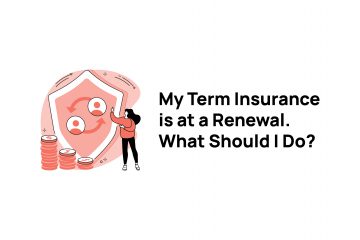One thing that often comes up when trying to figure out a life insurance plan is how long should the ‘term’ be on your term life insurance plan. There are a few things to consider when deciding which life insurance term is right for you.
Renewable Term Life Insurance
Term life insurance is issued as policies that are “renewable”. What this means is that the policy is guaranteed to stay in effect at the renewal points. As an example, if you own a 10-year renewable term life insurance plan, every ten years the insurance plan renews without medical underwriting. This means that the insurance company will not ask any health questions or require a medical examination at the end of the 10 years. As long as you are paying the premium, the policy will stay in force until it reaches its expiry point (usually age 75 or 85 depending on the company and policy). This is a very important aspect of term life insurance. You don’t know what will happen in the future to your health, so not having to re-qualify medically at renewal points is very important. Always make sure that your term life insurance policy has a renewable feature (most policies have this feature).
Life Insurance Premiums Over Time
The next thing to look at when you’re looking at term life insurance is what happens to the premium (the cost of the policy) at the renewal points. The shorter the term (think 10 years), the lower the initial premium will be. It is very important to look beyond the initial premium because what you see is that renewal premiums are not linear. People often ask me about this. The answer makes me sound like a bit smart-alecky, but one thing that a life insurance company knows for sure is that at the end of the first term (again, think 10 years) you are that much closer to the end of your life. The other thing that they know is that the odds that something happens to you (health wise) between years 10 and 20 of the policy are slightly higher than they are in years 0 and 10 of the policy. This means that if you paid $20 a month for coverage in years 0 and 10, you will pay more than that in years 10 and 20 because the risk to the insurance company is much higher.
How To Choose the Right Term Life Insurance
Now that we understand these things, let’s figure out how to choose the right term length for your life insurance. What you need to consider is how long the life insurance coverage is needed for. Using mortgage coverage as an example, it is typically in the 20 to 25 year range. If you make the decision based on what is cheapest right now (e.g. 10 year term), you could potentially face 2 renewal periods (first renewal period at 10 years and second renewal at 20 years) and that will make the cost significantly higher over the duration of the need than it would have been if you had just taken a 20 or 25 year term life insurance policy out in the first place. Try your best to match the length of the term with how long you require life insurance for.
Look at what it will cost you to cover the entire need, not in the first year, and you will see that there are savings available over the duration. If you need life insurance for 20 years, add the costs for the first 10 years PLUS the cost of the renewal for the second 10 years and compare these costs with the premium costs of a 20 year term policy.
Pay a little more now to save a lot over the life of the policy. Please contact us if you have any additional questions or request a quote.




